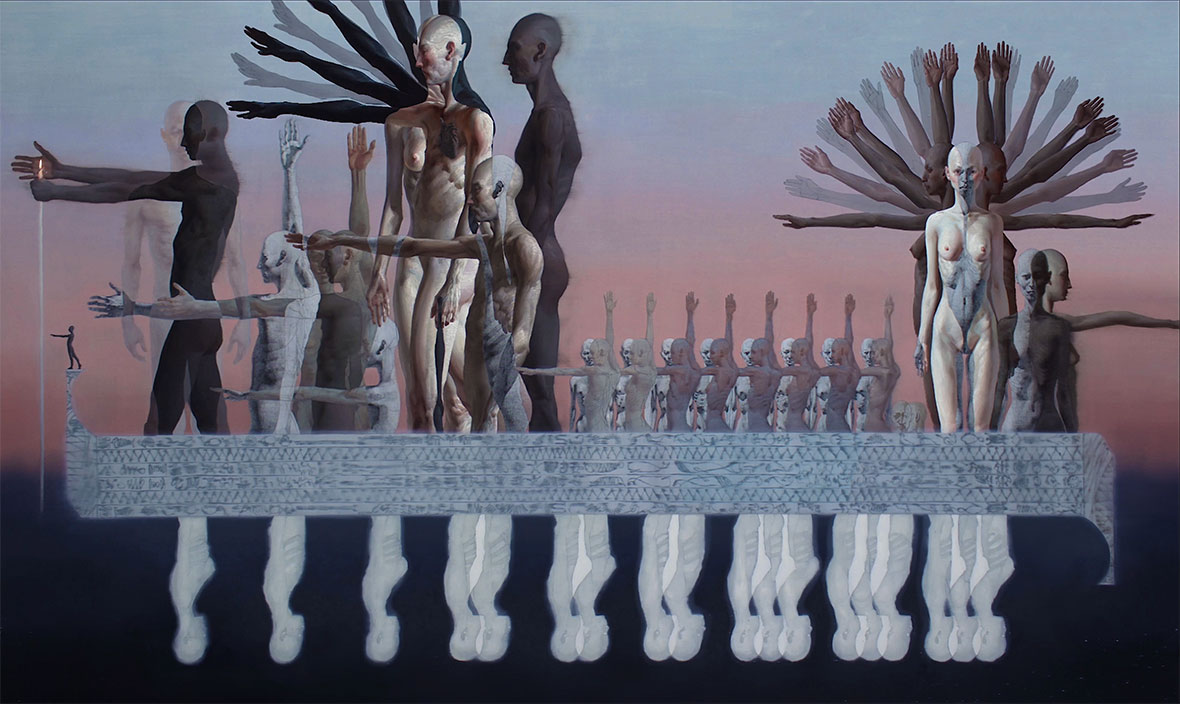Have you ever wondered about the intricacies and enigma surrounding Thailand’s temple architecture? It’s hard not to be captivated by the mystical beauty and elaborate designs of these temples. In this article, we will dive deep into the enchanting world of Thailand’s temple architecture, exploring the symbolism, history, and unique features that make them a true marvel.
Thailand’s temple architecture is a fascinating blend of religious, cultural, and artistic influences that give each temple its own distinct character. From the iconic glittering roofs to the exquisite sculptures and intricate carvings, the attention to detail is truly remarkable. Each element of the temple carries deep symbolism, telling stories of Thai mythology, Buddhism, and ancient traditions. By unraveling the hidden meanings, we can gain a deeper understanding of Thai culture and spirituality.
Throughout the article, we will explore some of the most famous temples in Thailand, such as Wat Arun and Wat Phra Kaew, delving into their history and significance. We will also learn about the different architectural styles, ranging from the majestic Lanna-style temples of the north to the graceful Sukhothai-style temples of central Thailand. By the end of this journey, you will have a newfound appreciation for the architectural wonders that Thailand has to offer. So, let’s embark on this adventure and uncover the secrets of Thailand’s temple architecture together.
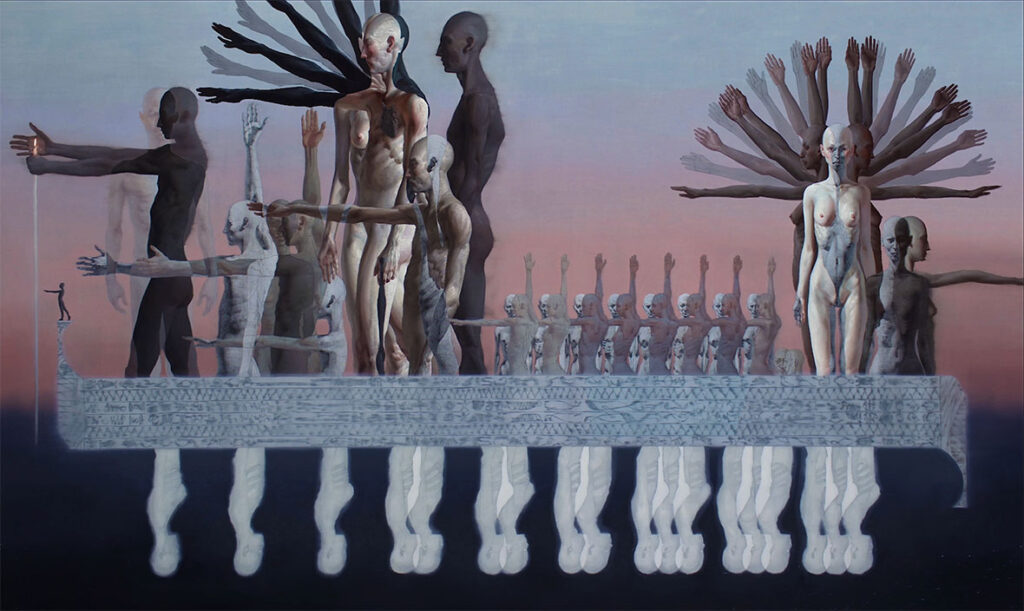
Introduction
Thailand’s temple architecture is a mesmerizing blend of rich cultural heritage, distinctive features, and symbolic layouts. With a history deeply rooted in Buddhism, the temples in Thailand hold historical significance and exemplify the country’s architectural prowess. This article aims to unravel the enigma behind Thailand’s temple architecture, exploring its origins, distinctive features, key architectural styles, famous temples, conservation efforts, and its role in cultural tourism.
Thailand’s Rich Cultural Heritage
Influence of Buddhism
Buddhism has played a pivotal role in shaping Thailand’s culture, including its temple architecture. Introduced to Thailand in the 3rd century BCE, Buddhism quickly became the dominant religion in the region. Temples, known as “wats” in Thai, were built as places of worship, meditation, and spiritual enlightenment. These temples reflect the deep-rooted spiritual beliefs and practices of the Thai people.
Historical Significance of Temples
Thailand’s temples have stood as witnesses to the country’s history for centuries. They have served various purposes, including being places of worship, centers of learning, and even fortresses during times of war. The intricate architecture and elaborate designs of these temples symbolize the power, wealth, and devotion of the Thai people throughout history.

Origins of Thai Temple Architecture
Influences from Indian Architecture
Thailand’s temple architecture draws inspiration from Indian architectural styles, particularly from the ancient Indian civilization of Gupta and Khmer empires. The influence of Indian architecture can be seen in the use of decorative motifs, such as lotus flowers, mythical creatures, and intricate carvings. The adoption of these elements showcases the cultural exchange between India and Thailand.
Blend of Local and Foreign Styles
While influenced by Indian architecture, Thai temple architecture also showcases a unique blend of local and foreign styles. Local materials and construction techniques were incorporated into the design, giving rise to distinctively Thai features. This fusion of styles is a testament to the creativity and adaptability of Thai artisans and architects.
Distinctive Features of Thai Temples
Gilded Exterior
One of the most striking features of Thai temples is their gilded exteriors. Gold leaf is applied to the surfaces of the buildings, reflecting the importance of Buddhism and symbolizing the enlightenment sought by devotees. The shimmering gold against the vibrant colors creates a captivating sight for visitors. This radiant exterior is an iconic characteristic of Thai temples.
Elaborate Roof Structures
Thai temples are often characterized by their intricate and multi-tiered roof structures. These roofs, adorned with decorative finials and ornate details, showcase the craftsmanship and attention to detail of Thai architects. The roofs are often steeply angled, which is believed to represent the connection between heaven and earth.
Intricate Carvings and Murals
The interior of Thai temples is adorned with intricate carvings and colorful murals. These artwork depict scenes from Buddhist scriptures, local folklore, and historical events. The detailed carvings and vivid murals serve as visual storytelling tools, captivating visitors and offering insights into Thailand’s rich cultural heritage.
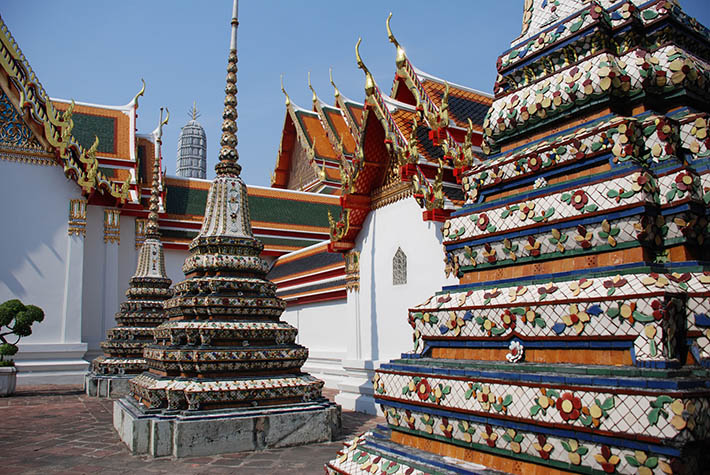
Layout and Symbolism
Mandala Concept
The layout of Thai temples follows the concept of the mandala, a symbolic representation of the universe in Buddhism. The central ordination hall, or “ubosot,” is positioned in the center of the temple complex, symbolizing the axis mundi, the center of the universe. Surrounding the ordination hall are various structures that represent different realms and aspects of Buddhist teachings.
Ordination Hall and Chedis
The ordination hall, as the main focal point of the temple, is where ordinations and important religious ceremonies take place. It is usually adorned with intricate carvings and houses a statue of the Buddha. Chedis, or pagodas, are also common features in Thai temples. These towering structures serve as reliquaries, housing sacred relics of Buddha and esteemed monks.
Ubosot and Vihara
Apart from the ordination hall, Thai temples also have a ubosot, which serves as a meditation hall and a space for religious study. The vihara, or assembly hall, is another essential structure within the temple complex, providing a meeting place for monks and devotees. Each of these structures adds to the overall symbolism and purpose of the temple.
Key Temple Architectural Styles
Lanna Style
The Lanna style of temple architecture can be found in northern Thailand. It is characterized by its distinctive stepped roofs, intricate wood carvings, and vibrant use of colors. The Lanna temples showcase a harmonious blend of Thai and Burmese architectural influences, reflecting the historical relationship between the two regions.
Ayutthaya Style
The Ayutthaya style, named after the ancient capital of Thailand, is characterized by its distinct dentil cornices, multiple-tiered roofs, and intricate stucco decorations. This architectural style reflects the grandeur and sophistication of the Ayutthaya Kingdom, which played a significant role in shaping Thailand’s history.
Rattanakosin Style
The Rattanakosin style, also known as Bangkok style, emerged during the reign of King Rama I in the late 18th century. It is characterized by its symmetrical layout, large prangs (tower-like structures), and exquisite details. The Rattanakosin temples showcase a fusion of Thai, Khmer, and European architectural elements, reflecting the cultural diversity of the era.
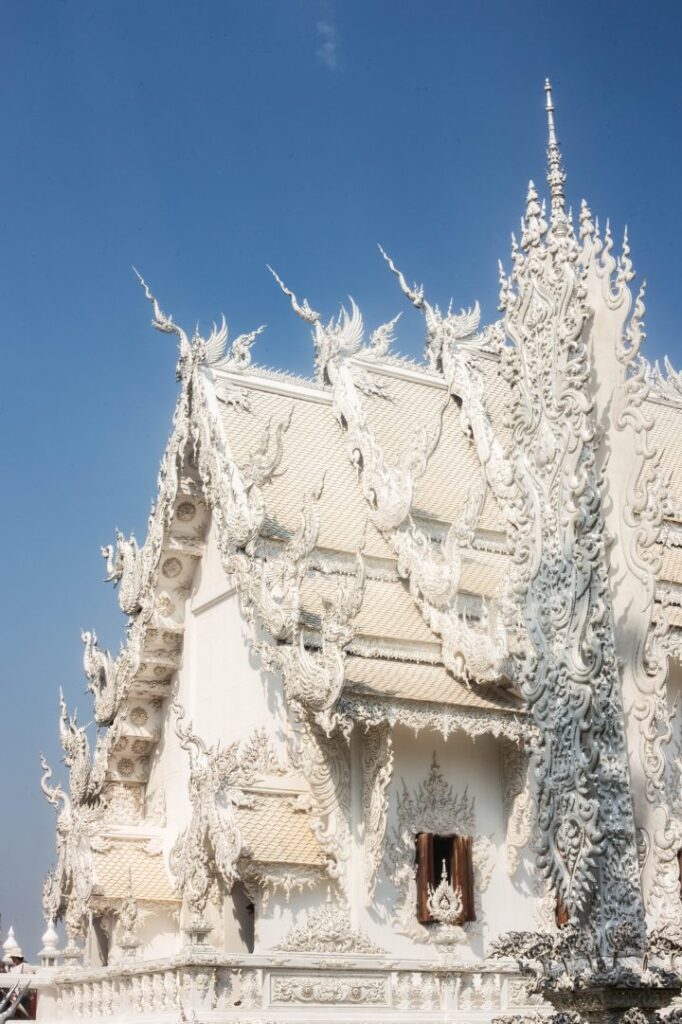
Famous Thai Temples
Wat Arun
One of the most famous temples in Thailand is Wat Arun, also known as the Temple of Dawn. Located along the Chao Phraya River in Bangkok, Wat Arun is renowned for its central prang, which is adorned with colorful ceramic tiles and seashells. Climbing to the top of the prang offers visitors panoramic views of the city.
Wat Phra Kaew
Situated within the grounds of the Grand Palace in Bangkok, Wat Phra Kaew, also known as the Temple of the Emerald Buddha, is of immense cultural and religious significance. The temple houses the Emerald Buddha, a revered statue carved from a single block of jade. The intricate details in the temple’s architecture and the revered statue make it a must-visit for tourists.
Wat Phra That Doi Suthep
Perched on a mountainside overlooking the city of Chiang Mai, Wat Phra That Doi Suthep is a revered pilgrimage site. The temple’s golden chedi is a prominent landmark, visible from afar. Visitors can climb the stairs to reach the temple and explore its intricate golden murals, peaceful courtyards, and breathtaking views of the surrounding landscape.
Conservation and Restoration Efforts
Challenges in Preserving Temple Architecture
Preserving Thailand’s temple architecture presents several challenges. The country’s tropical climate, with its high humidity and temperature fluctuations, can cause rapid deterioration of the structures. Additionally, urbanization and tourism development pose threats to the original landscape and architectural integrity of the temples.
Success Stories in Restoration
Recognizing the importance of preserving these cultural treasures, efforts have been made to restore and maintain Thai temples. Organizations, both local and international, have collaborated to implement restoration projects. These efforts have successfully preserved and showcased the architectural marvels of Thailand’s temples to future generations.
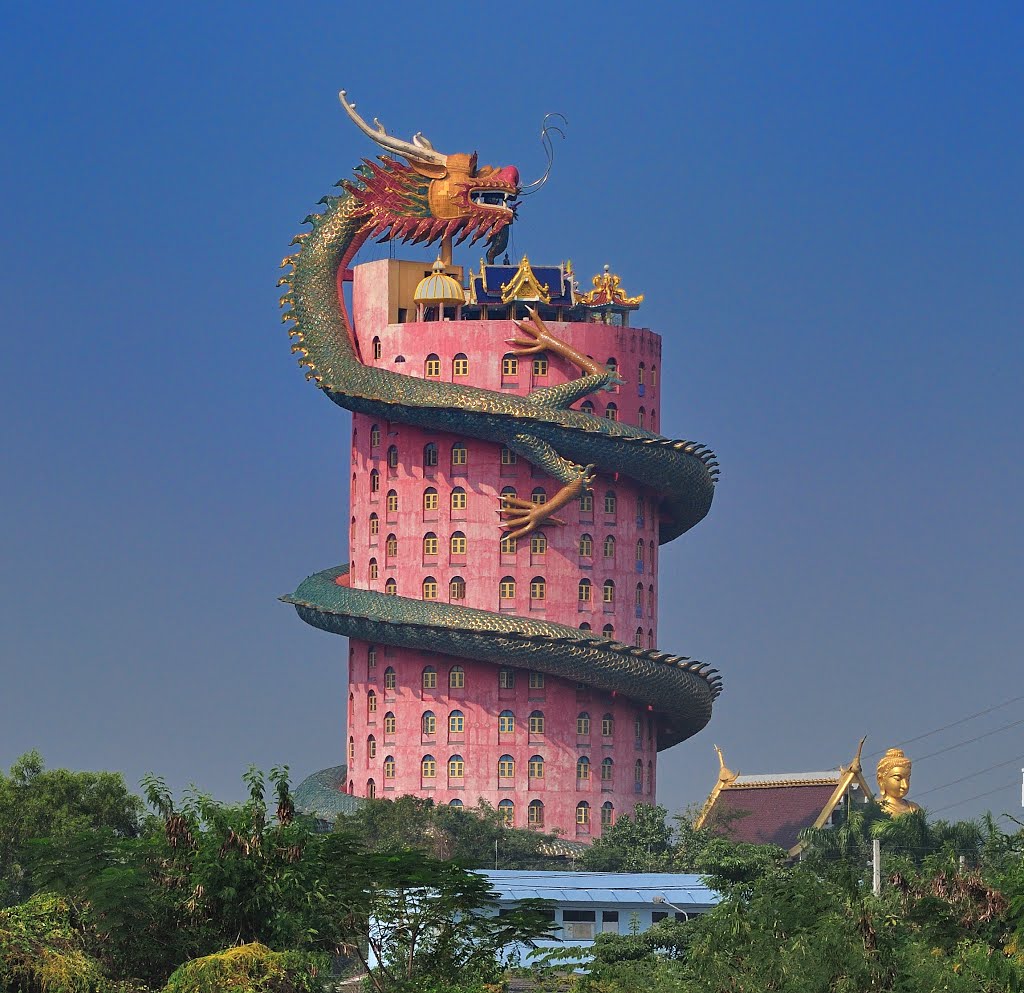
Thailand’s Temple Architecture and Tourism
Impact of Tourism on Temples
Thai temples attract millions of tourists each year, generating substantial revenue for the country’s tourism industry. However, the influx of visitors can also pose challenges in terms of managing the impact on the temples’ structural integrity, cultural significance, and the experience for visitors.
Role of Temples in Cultural Tourism
Thailand’s temples play a pivotal role in cultural tourism, offering visitors a unique insight into the country’s rich heritage. They provide a space for spiritual contemplation, cultural immersion, and learning. Temples also serve as venues for religious festivals and rituals, allowing tourists to witness and participate in these important cultural events.
Conclusion
Thailand’s temple architecture is a testament to the country’s rich cultural heritage and the devotion of its people. The intricate designs, distinctive features, and symbolic layouts of these temples reflect the deep-rooted spiritual beliefs and artistic excellence of the Thai people. As Thailand continues to embrace tourism, it is imperative to strike a balance between preserving the architectural wonders of its temples and managing the impact of tourism. By honoring and preserving these architectural gems, Thailand can continue to celebrate and share its cultural legacy with the world.
